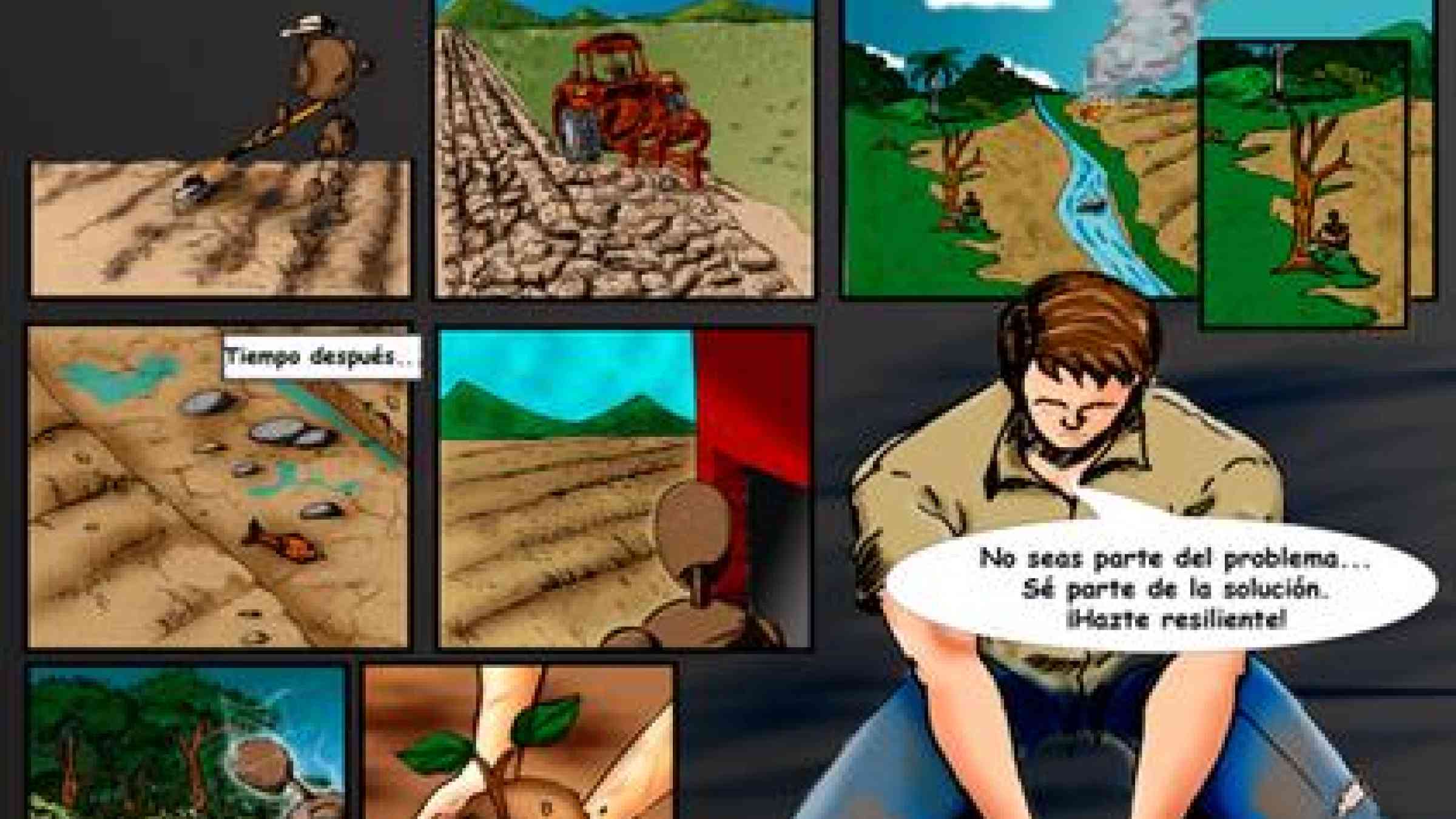Comics power DRR in Nicaragua

'Don’t be part of the problem, be part of the solution. Become Resilient!' is the message of the Nicaraguan comic. (Photo: Apex Studio)
LEON, Nicaragua, 29 June 2015 – Volunteers in Nicaragua are deploying the graphic power of comics to spread the message that disasters are not natural but a result of the collective failure of communities to cope with hazards.
Nicaragua and its fellow Central American nations lie in one of the most climate-vulnerable regions of the world, where degradation of the environment, poverty and governance gaps compound the impact of natural hazards such as landslides, hurricanes, earthquakes and active volcanoes.
According to the First Regional Report on the State of Vulnerability and Disaster Risk in Central America, published by UNISDR and the Coordination Center for Natural Disaster Prevention in Central America, 69% of Nicaragua's population is exposed to two or more risks. It is estimated that in a decade, disaster losses have totalled US$225 million in Nicaragua, and are one of the main causes that make it the second-poorest country in the region, according to the World Bank.
With that in mind, the Volunteer Network of Professionals for Resilience in Nicaragua wants to show people what they can do to reduce the risk of disasters -- for example, planting trees to stem land degradation and thereby curb the threat of landslides.
Under the slogan "Don’t be part of the problem, be part of the solution. Become Resilient!”, the Network’s comic uses visual language to present everyday situations and convey the message that disasters are not inevitable.
Architect and urban planner Nadeisdha Cisneros -- founder of the Network and advocate of the global “Making Cities Resilient” campaign, which is managed by UNISDR -- said the aim is to raise public awareness of the community’s role in minimising the impact of disasters. That tallies with the all-society approach central to the Sendai Framework for Disaster Risk Reduction, the 15-year agreement adopted by the international community in March.
The comic, designed with the help of Apex Studio, revolves around the character Woody, who resembles an artist’s dummy. He is apathetic, has a self-centred attitude towards his environment, and lacks knowledge about the risks to which he is exposed.
In the plot of each story, Woody realises how his individual actions contribute to building risks in his community. He learns how to correct these actions and to play a positive role in his environment.
“This is where the character stops being a dummy and is transformed into a human being," explained Carlos Medina, coordinator of the graphic design department of Apex Studio, part of the artistic team that produced the comic.
Architect and teacher Carlos Corea, Apex Studio’s chief executive, said the message was clear: “It is up to each citizen to assume his or her share of responsibility for building resilience."
To start with, the Network has offered it to at least 20 schools, three universities and six community centres in the departments of León, Chinandega and Managua. It is also sharing the comic on social networks, radio, and television. A related project is underway to produce new stories in animated video format.
"I like that it’s a comic because it’s funnier and more interesting,” said Ricardo Arce, a 13-year-old León school student.
“As a child, I know that I must not throw garbage in the street because it goes to the sewers and during heavy rains, the streets flood and the waters reach the houses, causing a lot of damage. I also know that it is wrong to cut trees, because without trees the rivers dry up. If we all act like the person in the comics doing bad actions against nature, then we cannot complain when our city is damaged,” he added.
Nivea Centeno González, a 20-year-old university student, agreed: "The message that this comic transmits is very clear and easy to understand for me. Each person should be an example of action. It’s very easy to blame nature itself for disasters that occur. But if I throw garbage in the streets I'm as responsible for floods as the entrepreneur who cuts down forests to build buildings.”
The Network was created in 2014 to build a platform that integrates disciplines involved in disaster risk reduction and resilience, and promote the exchange of experiences, ideas and views. It is currently made up of 15 professionals, from architects and engineers to artists, graphic designers, journalists and communicators, whose activities include developing educational materials for children, updating municipal plans and risk maps, and disseminating information in the local and national media.
Explore further
Also featured on
Is this page useful?
Yes No Report an issue on this pageThank you. If you have 2 minutes, we would benefit from additional feedback (link opens in a new window).